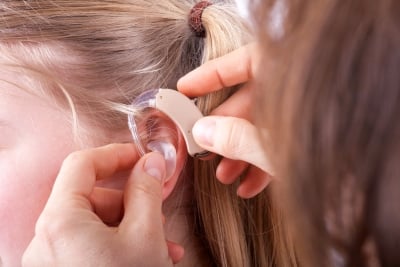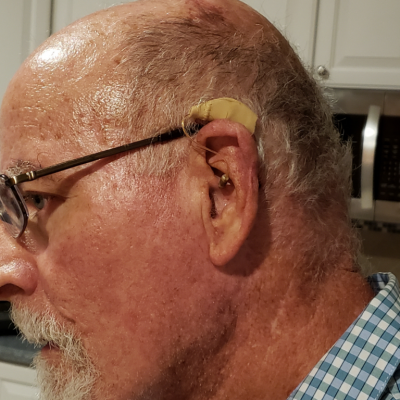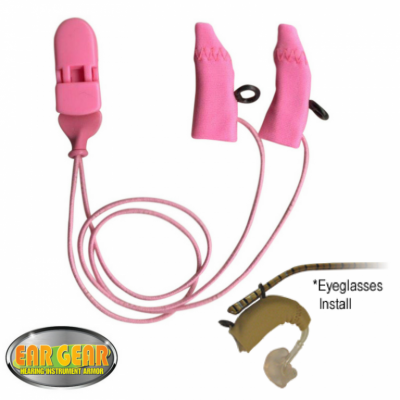Hearing instruments are delicate electronic devices that can do amazing things using revolutionary technology. As with any technology, hearing instrument users can experience some frustration in trying to keep devices comfortable, maintained, and reliable. Fortunately, many of the problems and issues common to hearing aid users can be prevented or solved with a little patience and the right tools including hearing aid clips.

Loss
Hearing instruments are expensive, specialized, and complicated to replace. This can pose issues for parents who have young children that require hearing aids. Learning, as a family, to help your child grow accustomed to wearing and caring for his or her hearing instrument will help to minimize loss and damage to expensive equipment over time. The American Speech-Language-Hearing Association (ASHA) notes on their organization's website that securing hearing aids is of utmost importance because, “Children who have not been consistent hearing aid wearers may be more of a challenge.” There are several steps families can take to lessen or solve these challenges.
They include:
- Start slow – Allow your child to adjust over time to wear. Particularly, in the beginning, encourage the use of hearing aids during fun activities. Gradually extend use to span the whole day.
- Secure hearing aids during use – Discuss methods and tools (like toupee tape, hearing aid clips or lightweight hats) with your audiologist to keep hearing devices secured during use.
- Invest in accessories that prevent loss and increase enjoyment – Accessory product lines like Ear Gear, which offer protective sleeves with cords, are designed to lessen the chances of misplaced or missing hearing aids and allow children more time for running, jumping, and playing. The color options add an element of fun and encouragement for youthful users hesitant to use their hearing devices.
Loss of hearing devices is also an issue with seniors, and one that can lead to more detrimental issues. Studies done in recent years, like the one by Frank Lin at Johns Hopkins, have found that seniors who are experiencing hearing loss are at a higher risk of dementia and Alzheimer’s. Treating that hearing loss can be essential in preventing these health issues. These patients are also most likely to lose their hearing aids and would greatly benefit from hearing aid clips.
Chafing
Wearing a hearing aid becomes more comfortable over time. As with any comparable accessory – one good comparison is glasses or contacts for the sight impaired – there is an adjustment period. Over time, patients adjust to their hearing instruments and become accustomed to and are able to make the adjustments they need to stay comfortable. There are additional steps hearing aid wearers can take to ease the way. Start by checking with your audiologist to make sure the device fit is correct. Issues like receiver wires being too short or too long can cause discomfort and chafing.
Rubbing also occurs with wearers who have glasses. Several hearing aid forums address the problem with glasses and hearing devices, and offer a variety of solutions, including a conversation with your optometrist. Look into products that minimize rubbing against surfaces that can cause distress or soreness. Ear Gear makes hearing aid clips specifically for eyeglasses wearers. Ear Gear is made of soft spandex, and that extra comfort works to provide relief from potential chafing. There is also the O-ring attachment. The attachment allows your eyeglasses and hearing aids to function as a single unit. For younger clients, in particular, less chafing means fewer family struggles to maintain consistency.
Wind Noise
Several variables can cause feedback and whistling noises, which can be frustrating and overwhelming for wearers. Feedback occurs when sound is re-amplified by the hearing device in an endless loop. New technology is currently being developed to solve the issue at the source – the hearing aid. However, for users without the latest hearing instruments, there are accessories available to reduce the issue. Ear Gear provides a barrier that dampens wind noise and cuts feedback significantly. Customers report that Ear Gear significantly reduces wind noise while playing golf, during trips to the beach, and while working in open or exposed environments.
Moisture
Protecting your hearing aid from sweat and moisture is an all-too-common problem for people young and old. Delicate electronics require diligence to keep them from malfunctioning. In an era of complex and expensive mobile devices, we’re largely accustomed to owning accessories that protect our investments from the elements, and of course, hearing aids are no exception, especially in regards to moisture, whether it be rain or our own sweat.
The National Institute on Deafness and Other Communication Disorders (NIDCD) offers tips on how to care for hearing aids, including:
- Avoiding heat and moisture
- Keeping hearing aids clean of bodily fluids
- Staying away from substances, like sunscreen and hairspray, that can damage delicate electronics.
In a perfect world, your hearing aid will always be clean, dry, comfortable, and functioning. Reality is a little more complicated. Hearing aid clips, hearing aid covers, and other types of protectors offered by Ear Gear are designed to protect your device from moisture, wind noise, chafing, and loss.





